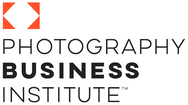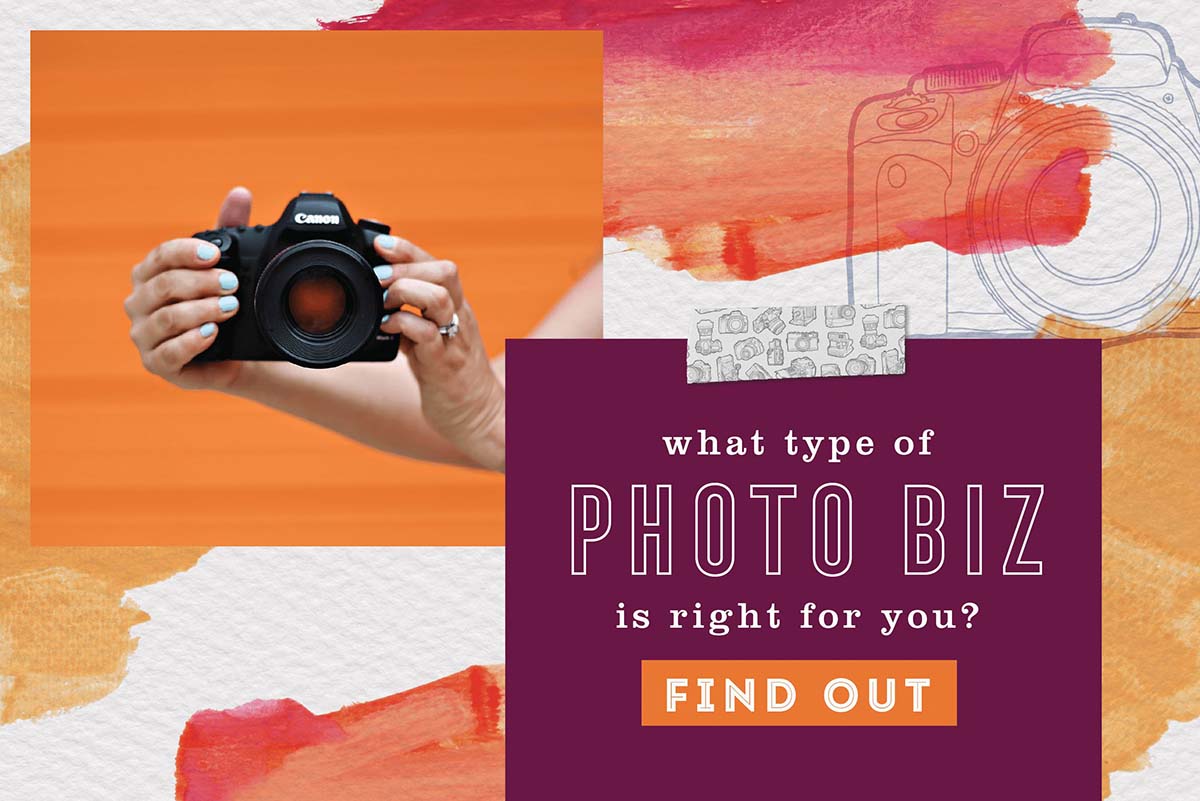I almost got stuck with a career I hated when I said goodbye to my 8-5 ad agency gig 21 years ago and opened Sarah Petty Photography.
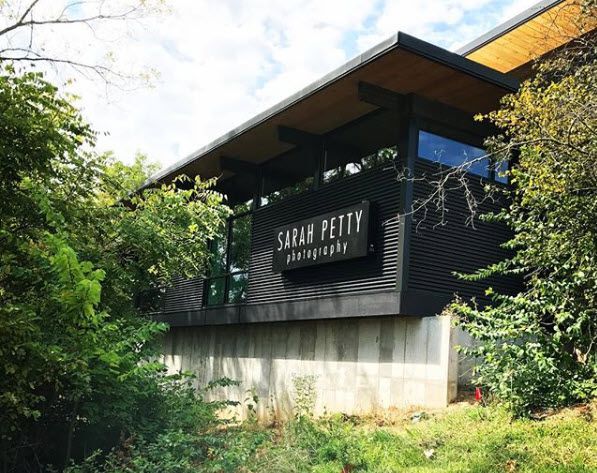
The boutique photography business model allowed me to eventually build my dream studio.
Luckily I got out of the wrong photography business model before it was too late. I didn’t have to suffer through a lifetime of financial stress, low wages, long hours and missing my kids growing up like many photographers who decide to pick up their camera and make it a business.
Maybe you took a wrong turn in your photography business journey and somehow ended up with a business you don’t love. Or maybe you’re just getting started with paying clients and want to make sure your passion for creating images doesn’t get sucked away once it becomes your career.
Well, I wrote this post, and even a New York Times Best-Selling book, for you.
Here’s how I landed in a photography business model I hated and how I escaped.
After years of heartbreaking miscarriages, my husband Joe and I finally got pregnant with twins. To say my pregnancy is rough is an understatement. Bed rest, daily shots, HELP syndrome and gestational diabetes filled my medical chart.
So once the tiny babies finally got here and out of the NICU, something in me changed. I realized I didn’t want to work their lives away for someone else’s dream.
That day I resigned from my ad agency career. And soon after I started booking photography sessions in the park with clients, charging $75 for a session and 20 proofs.
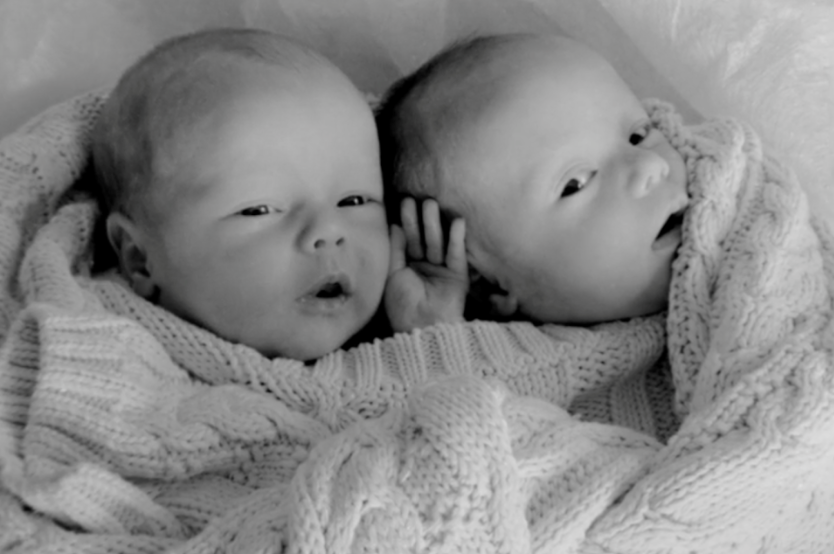
After having my twins, I decided to quit my ad agency job and go into business as a professional photographer.
The problem was that I could barely cover the cost of a babysitter while I was shooting. I really hadn’t given much thought to a business model. I was just trying to get clients and shoot as much as I could. And that’s where I see many photographers today falling into the same trap I did.
Their focus is on being seen by everyone on social media, setting up a Facebook page and Instagram account and stressing over what to post. They constantly scroll through their phones looking for new ideas to get clients and stalking competitors. Before long, their love of photography is crushed by cranky clients, long hours and feeling unappreciated and burned out.
Sound familiar?
Those feelings of obsessing over the competition, believing I wasn’t cut out for photography and realizing I may have to go back to a desk job consumed me before I figured out the boutique photography business model.
It’s so much different than the “shoot and burn” photography business model most photographers use. Let me explain.
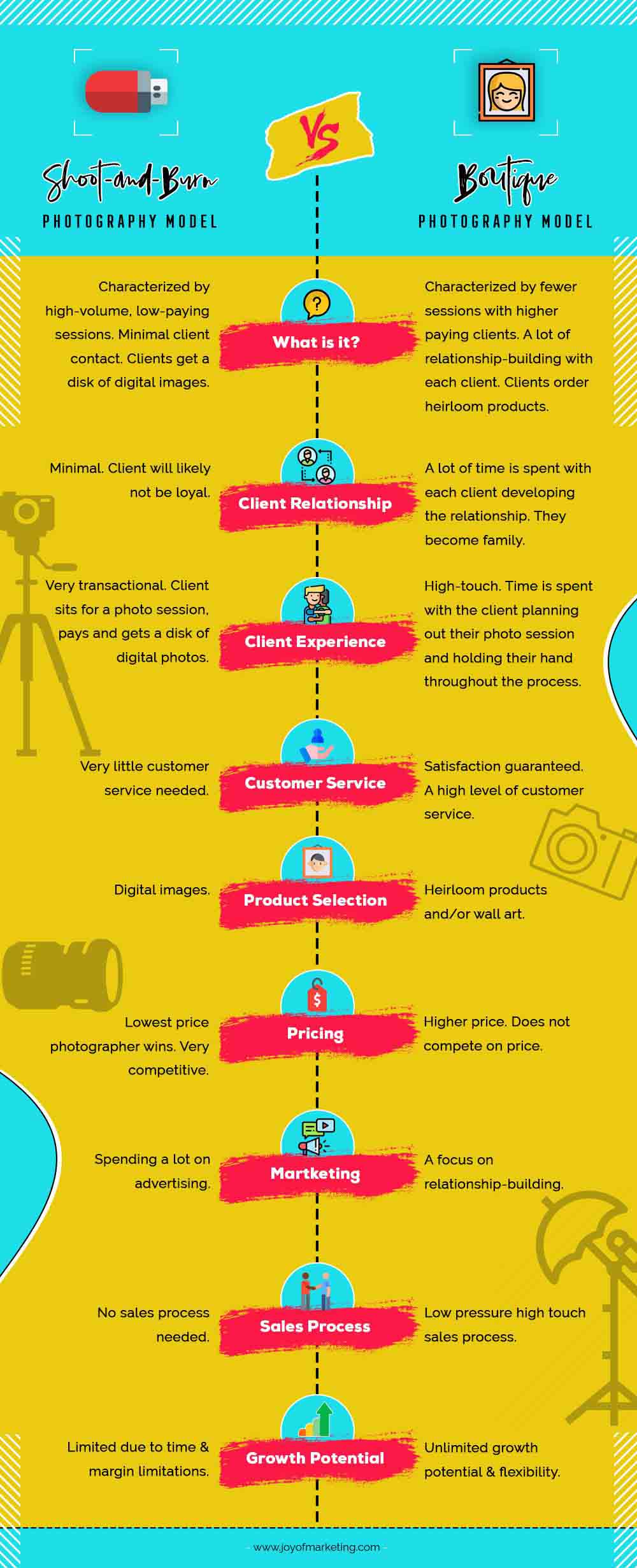
What’s the “Shoot and Burn” Photography Business Model?
The “shoot and burn” photography business model looks like this.
You’re shooting a lot of sessions at low prices and giving your clients a thumb drive of their digital images or putting them up on a gallery to download the digital files. You’re charging few hundred dollars for your services and most of your clients never order any prints or products from you because they the digital files are what they want.
In this business model, you’re constantly trying to fill up your calendar with sessions. You’re spending a lot of money on advertising to new clients. You’re working all the time, running from session to session. You get little fulfillment from your work or your relationships with your clients because you’re too busy to pour into them.

In the shoot and burn photography business model, your calendar is booked with sessions. You don’t get to take a break.
I’m not a fan of the shoot and burn photography business model because it was pretty much the photography business model I was in when I started.
WARNING: You can make decent money doing shoot and burn, but you’ll sacrifice your life, your relationships and your family time.
If you’re a hobby photographer or just testing the waters to see if you want to jump into the world of professional portrait photography, then this photography business model may work for you. But let me make it clear that the “shoot and burn” model requires a lot of time, pays very little and puts you in a competitive price-focused war with other local photographers.
What’s the Boutique Photography Business Model?
On the other side of the fence is the boutique photography business model.
This is where you’re taking on fewer clients, but you’re very high-touch with your clients. They receive an exceptional experience throughout the entire process as you create heirloom quality artwork for the walls of their homes.
And as a result of building that relationship with your clients and adding tremendous amounts of value into their experience; you’re able to charge a lot more for your photography.
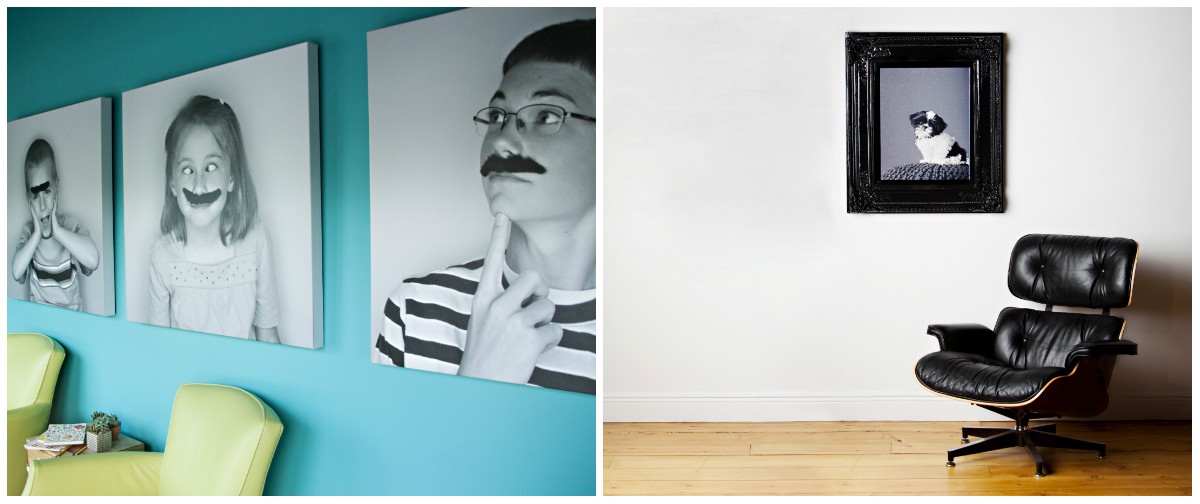
Selling beautiful, high-end wall art is one of the objectives in the boutique photography business model.
An Example of The Boutique Photography Business In Action
Here’s an example that will make this super clear.
You’re familiar with Walmart, right?
Walmart prides itself on being the low-price leader. You can get pretty much everything and then some at Walmart. Their products aren’t bad quality either. There just isn’t a lot of product options to choose from and you’re not going to be getting help from someone knowledgeable about that product and it’s always a race to get in and out of the store in the fastest time possible.
Now let’s say you want to buy a mountain bike.
You can always go to Walmart because they carry bikes. If you’re not picky about what kind of bike you take home, then that might work for you, but don’t expect much more.
If you want a specific bike that’s good for riding mountain trails and that’ll fit you perfectly with all the features you need, then you might opt instead to go to your bike specialty store that is owned and operated by a local cycling expert who knows the trails you want to ride and is passionate about everything to do about biking.
The bike store owner will ask you questions about what kind of bike you’re looking for and how you’ll be using it. He takes the time to match you up with the perfect bike that suits your needs. Does it end up costing more than Walmart? Sure. But in the end you leave with a bike that’s a perfect match for you and you feel like you’ve been taken care of, right?
That’s the boutique experience!
Now let me go deeper into the differences between these two photography business models.
Your Relationship With Your Photography Clients
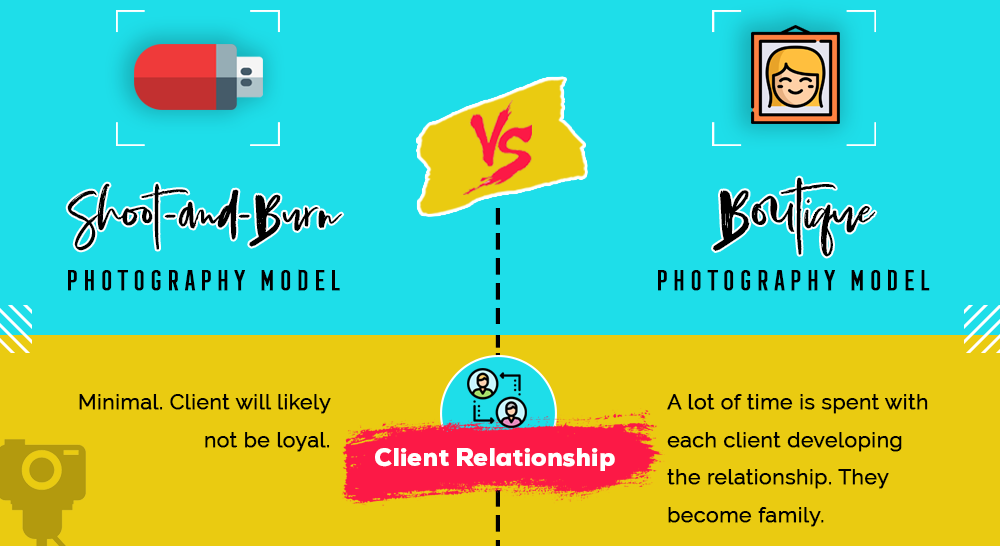
In the “shoot and burn” photography business model, your relationship with your clients is minimal. It’s basically just a business transaction.
Your clients probably won’t remember your name and you won’t remember theirs after a few months. Shoot and burn clients are more likely to be problem clients who haggle about price, or who nit-pick every step in the process because they don’t have anything invested in the relationship.
On the other hand, in a boutique photography business model, you’re going to spend extra time building and nurturing that relationship with your clients. You’re going to be sitting with them on multiple occasions throughout the process finding out what their needs are and helping them get the best experience possible.
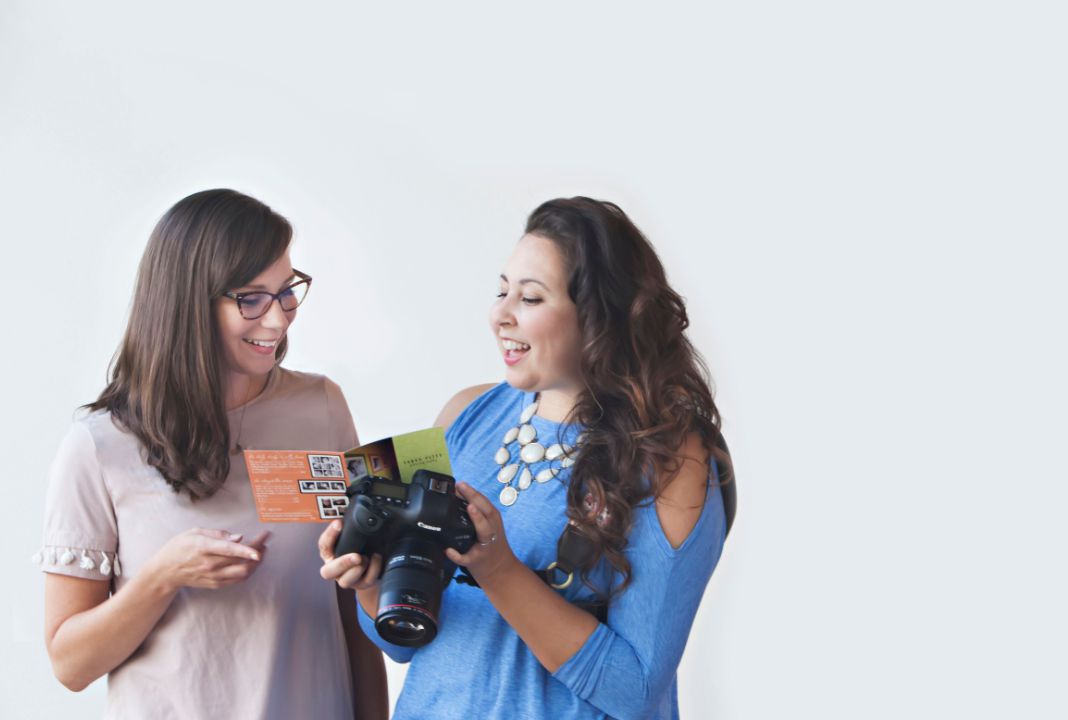
You hold your client’s hands through every step in the boutique photography business model.
With the boutique model, you’ll have the kind of client relationship where if you ran into them on the street a year later, they’d know you by your first name and you’d know them because your time together was such a memorable experience for them.
The Photography Client Experience
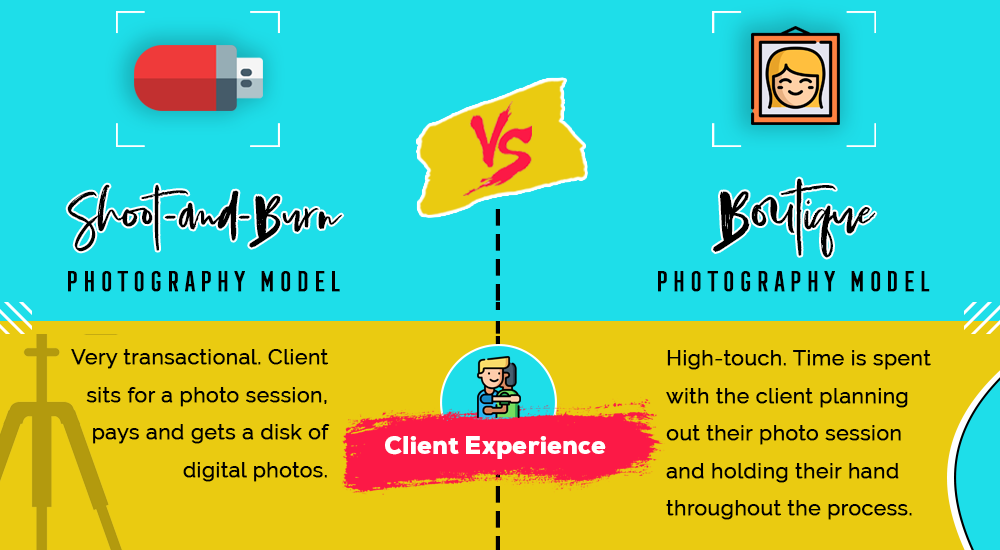
In the shoot and burn photography business model, your clients sit for a session, you take the photos, they hand you some money and you give them a disk of digital photos. It’s very transactional and, more often than not, you’ll never see them again.
On the other hand, let me give you a personal example of a boutique photography client experience.
I worked with my client to plan out a photo session where I took an entire bed out into my yard. We cut open a feather pillow and my client’s young daughter shook the feathers all over the place. I was capturing the session (and the mess) while everyone was laughing and having a blast.

The boutique photography business model is all about creating memorable experiences for your clients.
My client was talking about the photo session for months after it happened. To this day people in the neighborhood still ask me, “Sarah, What the heck were you doing out there in your yard with all the feathers?!”
In the boutique model, we can take the time to give our clients a better experience because we’re not pressured to move on to the next client so quickly.
When you’re able to take a quality client and give them a quality experience, you’re able to make a quality income.
Customer Service

You don’t need a lot of customer service with the shoot and burn model. You shoot, drop off a jump drive or throw their images up on a gallery, they pay you and it’s done.
With boutique, you’re holding your client’s hands every step of the way. From helping them measure spaces in their homes to recommending clothing for the session or even shopping with them, framing their work for them and hanging the art in their homes for them, boutique is very unlike a “shoot and burn” business.
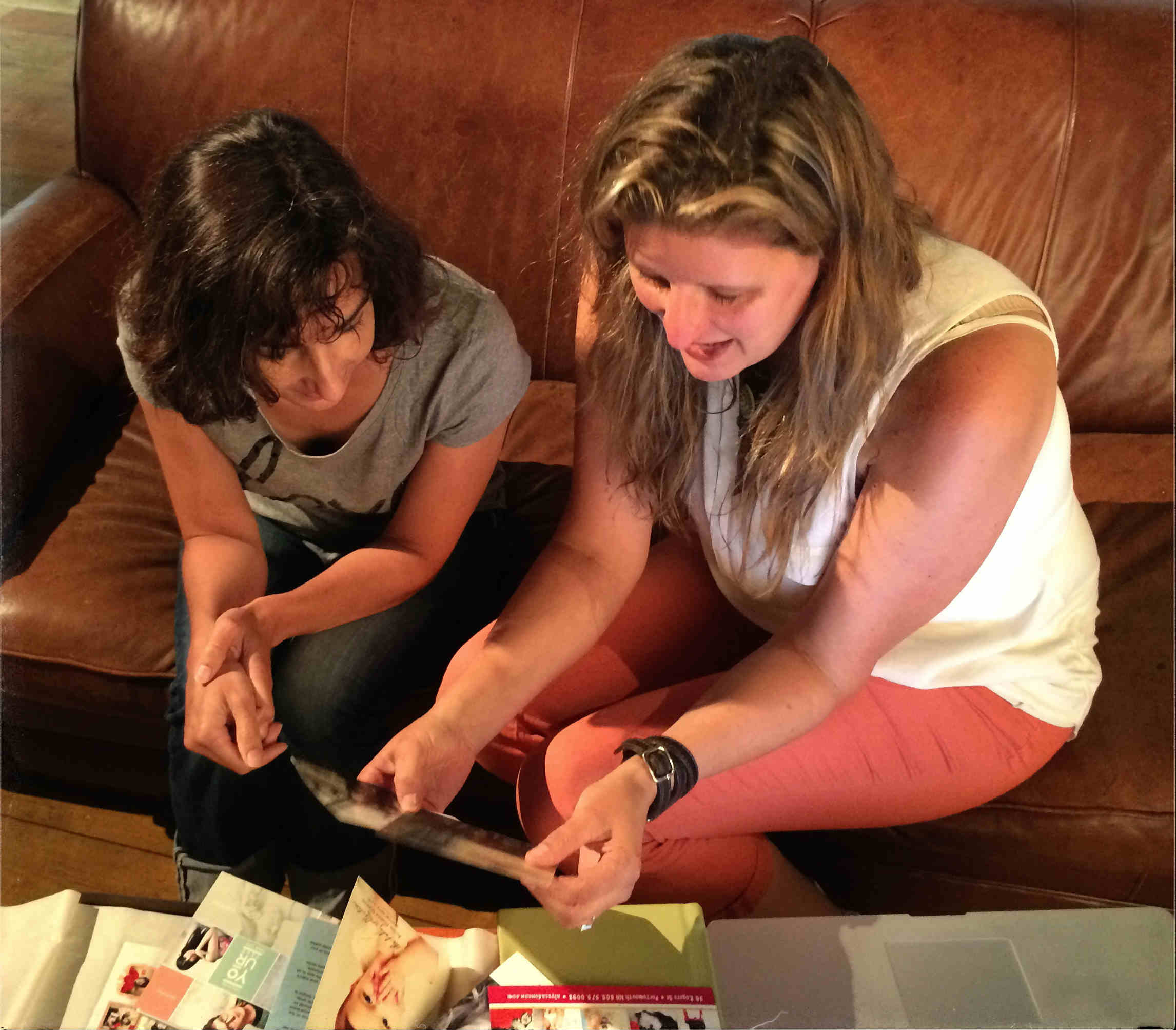
And I personally guarantee everything that we create for my clients. If we print something from our lab and there’s a mistake or if the client isn’t thrilled about it, we’ll reprint it for them as many times as we have to until they’re happy. We don’t have to worry about it cutting into our budget because we’re charging enough to easily cover any mistakes.
In the boutique model, your customer service is what adds value and makes clients believe you’re worth every penny.
Product Selection
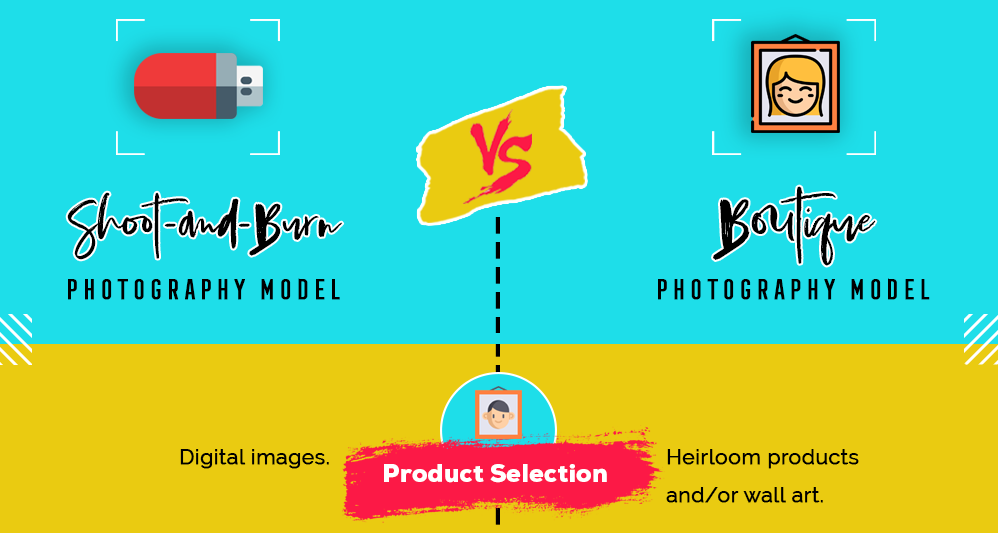
Let’s talk about products.
If you’re a shoot and burn photographer, there really aren’t any other products you offer. Most clients won’t want anything more than the jump drive of images. Your profit per client is limited to the session fee less any of your costs since there won’t be any additional products ordered.
And even if you do offer your clients products in addition to the digital files, your client probably won’t ever order these once they have the digital files. There’s no reason to. They have the digital copies. They’ll just go to Walmart and print the products they want themselves.
Here’s the big branding issue I have with this…
Your clients will probably print your images incorrectly and use a poor quality printer to produce these products. Sadly that final product is ultimately what their friends and family will see and judge you by. Those poorly printed products will become a representation of your work.
With boutique, you’re offering a limited selection of high-quality heirloom products and you’re going to be an expert consultant to your clients to help them choose a product for their home they absolutely love.
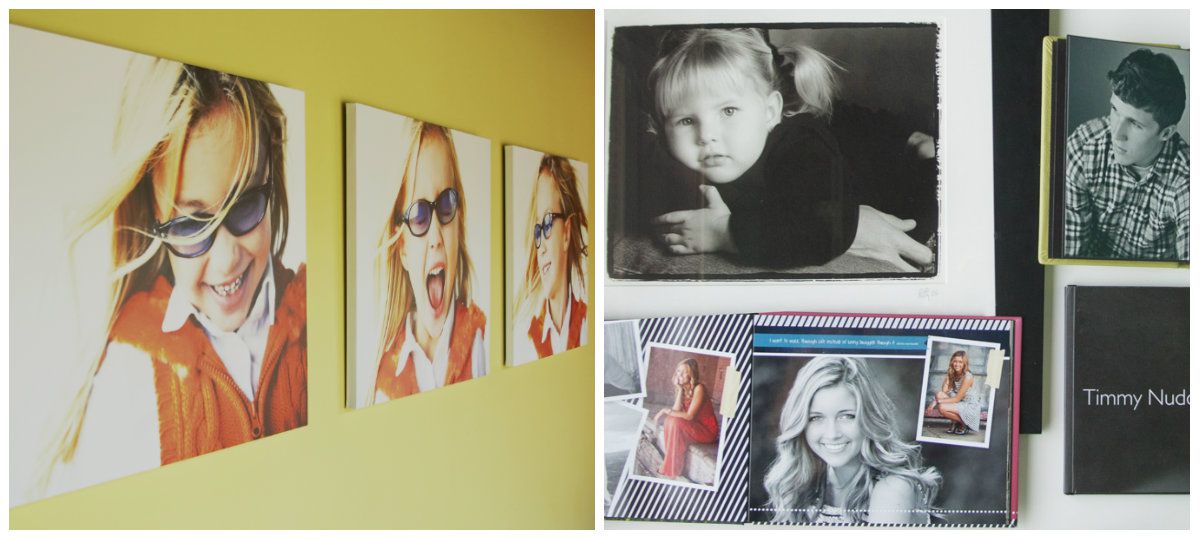
Shoot and burn photographers sell digital files. Boutique photographers sell wall art and heirloom products.
You don’t need a massive catalog of 5,000 products just because your lab offers that many. Instead, you’re going to be like your local artisanal restaurant with only 10 items on the menu. Offer fewer products and be really exceptional at creating them.
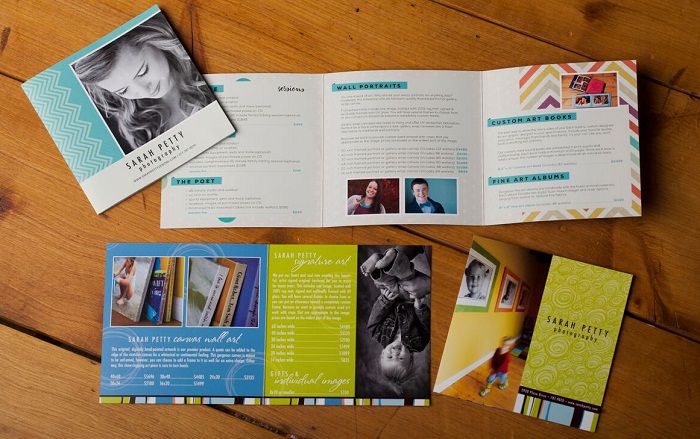
You don’t need 4,000 products in your catalog. Less is more when you’re selling boutique.
Photography Pricing

If you’re a shoot and burn photographer, you’re constantly looking at what your competition is charging so you can price your photography below theirs. The bad thing about this strategy is that your competition is doing exactly the same thing to you, so it becomes a race to see who can be the cheapest.
Being the cheapest photographer isn’t a game that you can win because someone out there will always be priced lower than you. And unlike other industries, with photography we don’t compete with low price — we compete with free!
Pricing strategy is the opposite with a boutique photography business. We don’t compete on price at all because the focus is placed on the value and the experience we deliver to our clients.
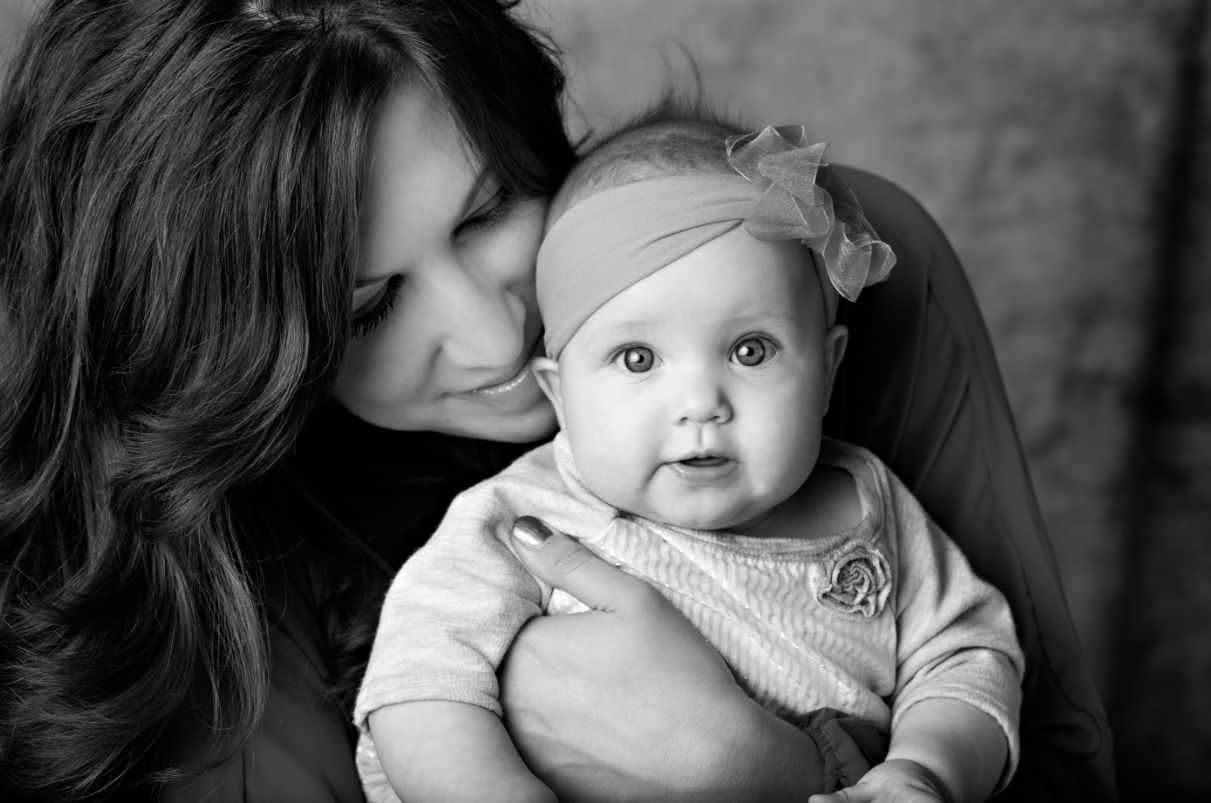
It’s like how Nordstrom doesn’t compete against Walmart on price. Or how a nice sit- down restaurant doesn’t compete with McDonald’s prices. They don’t have to compete because they offer two very different experiences for the customer.
When you don’t have to compete on price, it means you make more for your work and you don’t have to worry about what your competition is charging.
It also means you don’t have to pack your appointment calendar full of sessions and you’re able to spend quality time building a relationship with each and every client.
Marketing Your Photography Business

As a “shoot and burn” photographer, you’ll probably be spending quite a bit of money running ads that promote your low prices. You’ll also get referrals who are looking for cheap prices because they came from past clients who chose you for your cheap prices. Competition for clients is the strongest with the “shoot and burn” photography model.
When you’re a boutique photographer, you won’t run expensive ad campaigns for your photography. You won’t do Facebook advertising because those forms of marketing don’t work well for the boutique photographer.
Instead, you will market with relationship-centered marketing ideas like charitable auctions, notes of joy, marketing with other businesses, using value added incentives and referral programs. Yes, it takes longer to do and it takes more effort to build up strong relationships, but the good news is that it doesn’t cost nearly as much as what the “shoot and burn” photographer spends on advertising and the value of each client is 7.5x more than a shoot-and-burn client.

Boutique marketing is all about creating and building relationships.
Plus with relationship marketing you get a better quality client who will stick with you for years and years. They’re not looking for any other photographer and they’re not nearly as price sensitive as the “shoot and burn” client. So the average lifetime value of every client that walks through your doors is significantly higher than that of a “shoot and burn” photographer.
Here are 13 boutique marketing activities I use to get clients.
The Photography Sales Process

The “shoot and burn” photographer doesn’t really need a sales process. It’s all pretty much transactional – like driving through McD’s and grabbing dinner. Their clients see the lighted restaurant sign off the highway, decide what they want off the menu, order their food from the window and drive out.
With boutique, you need a structured sales process because you’re going to be holding your clients’ hands every step of the way.
I use a five-step sales process that I go through with each client which means I have contact with that client at least five times before they even invest anything past the session fee because I know that they’ll be more invested in the process and will see me as worth every penny.
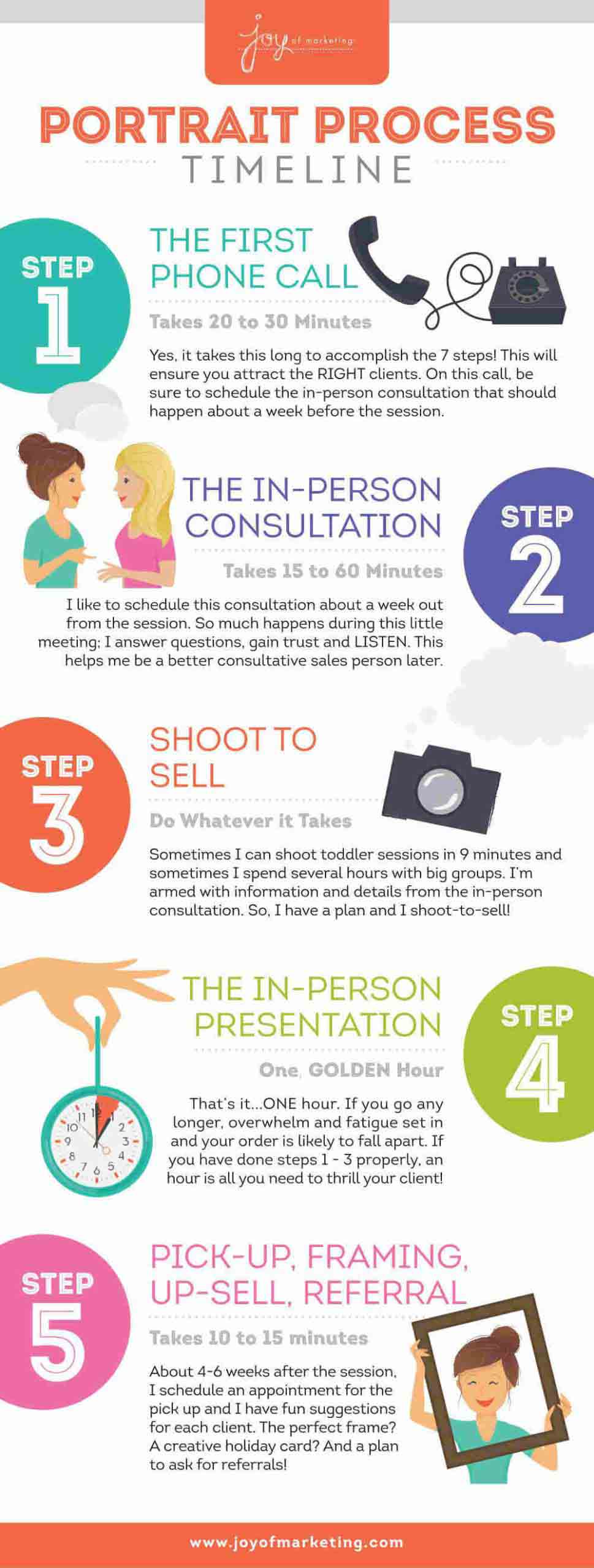
So yes, learning the sales process for the boutique model takes time and it’s not a quick and easy sale like the “shoot and burn” model, but what you have to understand is you’re taking on a better quality client and you need to give them a better quality experience.
Your role is to be their expert consultant rather than being the person behind the camera pressing the button. The reward for taking the time to learn and perfect your boutique selling method is the difference between a $200 order and one that is in the 4-figure and often 5-figure range. I’d say that’s worth it.
Growth Potential For Your Photography Business
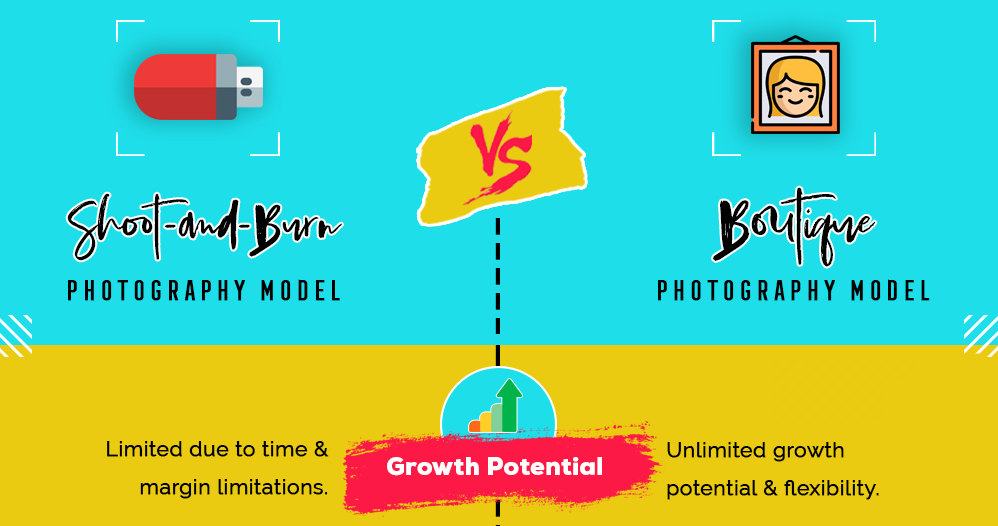
I hate to say it, but there’s not much growth potential in the “shoot and burn” photography business model.
You’re working overtime. You’re stressed out. You’re not getting enough vacation time or family time. And all that just to be making $40,000 or what a normal salary is?!
Again that’s fine if you’re a hobby photographer looking for some extra spending money, but if you’re a serious portrait photographer who is in it for the long run then this is not the path for you.
The problem with “shoot and burn” is that at some point you’ll want to grow and earn more and this business model makes it very difficult to do that because you just won’t have the time.
What I love about the boutique model is that you’re able to charge more and sell products and your sales potential is nearly unlimited.
Your average orders keep going up the better you get at the boutique sales process and, most of all, you’re able to take good care of your clients now because you aren’t pressed for time to kick one client out in order to take the next one in.
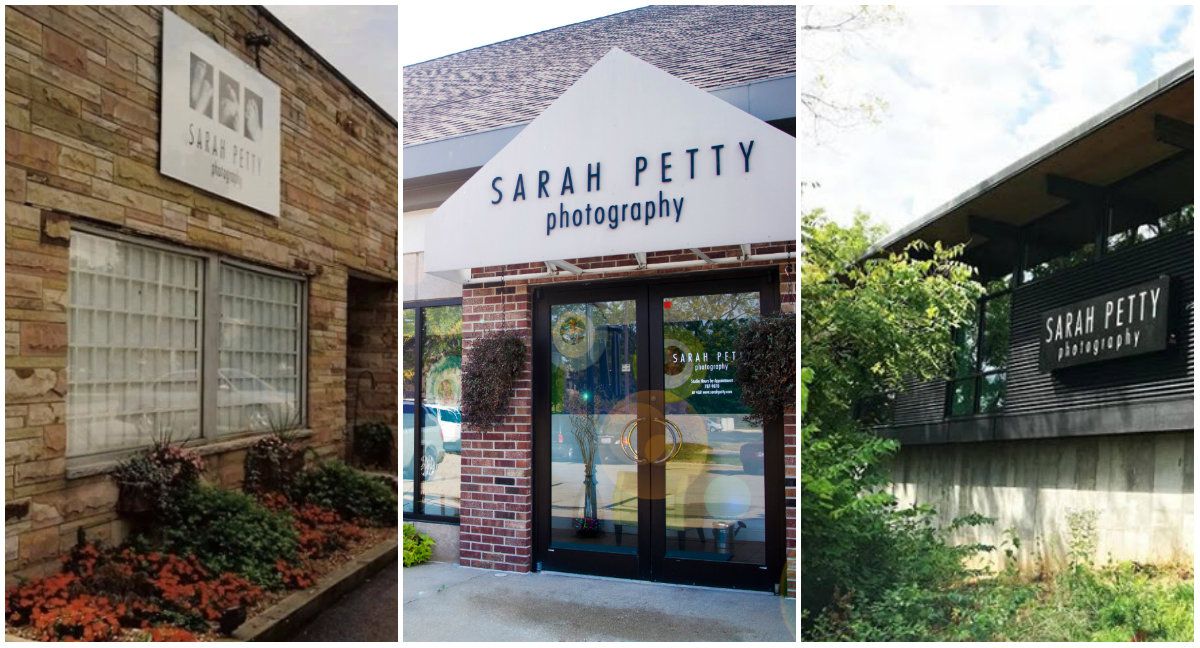
The boutique photography business model has allowed me to grow Sarah Petty Photography over the years. The left photo was my first location. The right is my dream studio we’re in right now.
When you’re able to charge more for your photography, you gain more flexibility in your life which can be spent with your family. You also have the income needed if you want to invest in opening up that studio you’ve always dreamed of, or hiring some help without having to worry if you’ll have the cashflow to pay next month’s bills.
In my business, I have a motto, “#FamilyFirst,” that I firmly stand by. That means I won’t let my business get in the way of taking care of my family. They are what’s most important to me and they are what comes first in my life.
The great part about running a successful boutique photography business is that it allows me the flexibility to practice my “family first” philosophy.
This is what I want for you too.
So To Sum It All Up…
Yes, you can make money in a “shoot and burn” photography business model and there are plenty of photographers out there who are doing it right now. But if you go the “shoot and burn” route, know that you are going to be spending a lot of time shooting sessions and spending a lot of nights on your computer culling images.
It’s a lot of work for not so great pay and that means less time to spend with your family.
If you want to have great relationships with your clients, be highly respected, be able to charge more, build a brand that people love and have an excellent growth potential for your business, then I highly recommend you learn how to follow the boutique photography business model.
Want to Learn More About the Boutique Business Model?
Then click below to grab a FREE hardcover copy of my New York Times Best-Selling Book*
* The book is free. Just pay for shipping.
